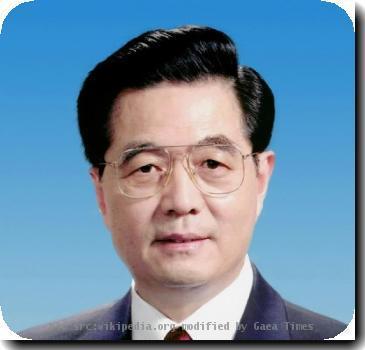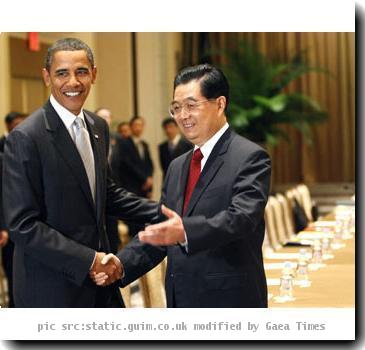Trade deficit narrows sharply in July as exports rise to the highest level in nearly 2 years
By Martin Crutsinger, APThursday, September 9, 2010
Trade deficit narrows to $42.8 billion in July
WASHINGTON — The trade deficit narrowed significantly in July as exports climbed to the highest level in nearly two years, reflecting big gains in sales of U.S.-made airplanes and other manufactured goods while imports declined.
The July deficit fell 14 percent to $42.8 billion, the Commerce Department reported Thursday. That was much lower than economists had forecast. The lower trade deficit should give a boost to overall economic growth.
Exports rose 1.8 percent to $153.3 billion, the best showing since August 2008, as sales of jetliners, industrial machinery, computers and telecommunications equipment all posted large gains. Imports, which had been surging, dropped 2.1 percent to $196.1 billion.
Imports of oil edged up a slight 0.1 percent to $26.8 billion but demand for other foreign products fell sharply. Imports of autos dropped by $713 million while those for other consumer goods such as clothing, televisions and toys all dropped sharply. Demand for business machinery and other capital goods also declined.
The drop in demand for imports reflected the slowdown in the U.S. economy during the spring as businesses cut back on rebuilding inventories and consumer demand slackened under the weight of high unemployment.
The surge in the trade deficit in the second quarter had trimmed 3.4 percentage points in the April-to-June quarter, leaving the gross domestic product rising at an anemic rate of 1.4 percent in the spring. The narrowing of the deficit in July, if it continues, could give a boost to GDP growth in the third quarter.
Economists at Decision Economics said in a research note that analysts who had been expecting 2 percent GDP growth in the third quarter might need to revise those forecasts higher by as much as a percentage point.
Through the first seven months of this year, the trade deficit is running at an annual rate of $495.1 billion, 32 percent higher than the $374.9 billion deficit for all of 2009, a year when the trade gap narrowed dramatically as a deep recession cut into demand for imports.
While the deficit is expected to increase this year, economists are hoping that an improving global economy will boost demand for U.S. exports. So far, manufacturing has been a standout performer in what has been a sub-par economic recovery.
For July, the trade deficit with China dropped slightly to $25.9 billion, but remained the highest for any country. Through the first seven months of this year, the deficit with China is running 17.7 percent above last year’s pace, spurring increased calls in Congress for a crackdown on what critics see as unfair Chinese trade practices such as a currency regime that keeps the Chinese yuan lower in value against the dollar. American manufacturers contend the yuan is undervalued by as much as 40 percent, making Chinese products cheaper in the United States and American goods more expensive in China.
Given America’s high unemployment rate, there is growing pressure to erect barriers to protect American workers. Some lawmakers are pushing legislation that would impose trade sanctions on Chinese imports unless Beijing moves more quickly to allow its currency to rise in value against the dollar.
The deficit with the European Union jumped by 27.8 percent to $9.9 billion in July. U.S. sales to Europe have been hurt by a rise in the value of the dollar against the euro earlier this year during the European debt crisis. The higher dollar compared to the euro makes American goods less competitive in that region while making European products cheaper for U.S. consumers.
America’s deficit with Canada, the country’s largest trading partner, dropped to $1.4 billion in July, a decline of 44.4 percent, while the deficit with Mexico narrowed to $5.3 billion, a decline of 14 percent.
Chinese President Hu Jintao sought to smooth over recently rocky relations with the United States on Wednesday, telling two visiting administration officials that he wants to see healthy and stable ties between the two nations.
Lawrence Summers, head of Obama’s National Economic Council, and Deputy National Security Adviser Thomas Donilon had productive discussions during two days of talks in Beijing, according to National Security Council spokesman Mike Hammer. But beyond the positive tone, neither side provided details of any agreements that might have been reached during the meetings.
Treasury Secretary Timothy Geithner on Wednesday noted that China in June had announced it would allow its currency to be more flexible in relation to the dollar. Since that time, the yuan has risen in value by less than 1 percent.
Geithner, in an interview on Bloomberg television, said the administration would like to see Beijing move more quickly on currency revaluation. The House Ways and Means Committee has scheduled a hearing on the currency issue for next week.
Tags: Asia, Beijing, China, East Asia, Europe, Greater China, Hu Jintao, International Trade, North America, United States, Washington


